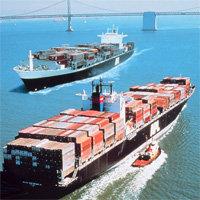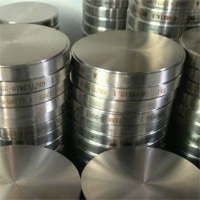Someone once asked me why I measure ship sizes in my space operas in tons of displacement. Well, here’s the short answer: I didn’t like any of the other measurements.
 For the long answer, let’s look at how some water vessels are measured. On the small end, they’re measured by length. We have the occasional 20-foot sloop for tooling around the lake. The America’s cup is a race between boats in the 18-30 meter range. Bigger ships, however, are rated by their weight. Technically, they’re measured by the amount of water they displace, but they only push away their own weight in water. (And no, it doesn’t matter whether that’s freshwater or saltwater, because they still displace the same weight.) The USS Nimitz measures just over 100,000 tons displacement. A common large oil tanker design measures over 400,000 tons displacement. Note that these are metric tons, i.e. 1000 kilograms.
For the long answer, let’s look at how some water vessels are measured. On the small end, they’re measured by length. We have the occasional 20-foot sloop for tooling around the lake. The America’s cup is a race between boats in the 18-30 meter range. Bigger ships, however, are rated by their weight. Technically, they’re measured by the amount of water they displace, but they only push away their own weight in water. (And no, it doesn’t matter whether that’s freshwater or saltwater, because they still displace the same weight.) The USS Nimitz measures just over 100,000 tons displacement. A common large oil tanker design measures over 400,000 tons displacement. Note that these are metric tons, i.e. 1000 kilograms.
Airplanes are measured in wingspan, though they are also often measured by their weight. This is mostly useful when looking at their maximum thrust for determining their flight characteristics. For example many modern fighter jets have more thrust than weight, allowing them to do a vertical climb at maximum thrust. Rockets are similarly measured by weight, but also typically by launch height. The Saturn V that carried Apollo 11 to the moon was 363 feet high and weighed in at 6.2 million pounds (or about 120 metric tons).
Cars are typically measured by weight and internal engine size. Again, it’s to give you some idea of their performance characteristics.
These are all useful measurements for the vehicles in question. But what about starships, particularly cargo-carrying merchant ships?
 Mass seemed a likely candidate since out there in the free-fall vacuum of space, rules like F=ma are king, but for a cargo ship, mass is going to change all the time. That’s reflected in that those ocean-going cargo ships are often given two displacements: an empty one, and a maximum load one. Of course, no merchant ship ever wants to travel empty, but I found myself looking for a constant, and the only constant is volume.
Mass seemed a likely candidate since out there in the free-fall vacuum of space, rules like F=ma are king, but for a cargo ship, mass is going to change all the time. That’s reflected in that those ocean-going cargo ships are often given two displacements: an empty one, and a maximum load one. Of course, no merchant ship ever wants to travel empty, but I found myself looking for a constant, and the only constant is volume.
I confess that some it came from my background playing the Traveller RPG back in the 80s and 90s. All of those ships were given in terms of tons displacement. Of course, for them it was not as convenient as tons of water where one cubic meter equals one metric ton. No, it was tons of the liquid hydrogen ships used as fuel, and that is not nearly as dense as water. One ton of liquid hydrogen takes up about fourteen cubic meters, so for you old Traveller fans, that “100 ton” scout vessel was closer to 1400 tons when comparing it to ocean-going ships.
So between Traveller and Earth-based ocean vessels, I found myself thinking in terms of volume based on tons of water displacement. With the 1 ton = 1 cubic-meter equivalence, I could have just as easily said cubic meters, but in writing it out, “tons displacement” just sounded better to my ear. Maybe that’s a lame reason, but there it is.
But as long as we’re talking mass, how much mass do these things actually have? Well, it is going to vary – one of the very reasons I didn’t use mass – but by and large, I would say that a starship is typically going to have less mass than the equivalent amount of water. In other words, put them in the ocean, and they’ll likely float.
I say that partly because ocean-going ships float, and I don’t imagine the interiors of starships being fundamentally different than ocean going vessels. There’s plenty of crew space, crawlways to various bits of machinery, and just plenty of open space around pipes and wires to be able to work on them when necessary. In short, they’re mostly air.
And the cargo? Well, with rare exceptions, it’s going to be mostly air as well. Let’s think about some heavy manufactured goods like a car. The storage space for my sedan is about 11 cubic meters, and that’s fairly tight. Its mass is about 1900kg, giving it only 17% the density of water. Again it’s mostly air. The only reason cars sink is that nothing but the tires are air-tight. How about a box of cereal? Mostly air. Clothing? Between the folds, the padding, and the interweave spacing, again mostly air. If you factor in the packing material around your fragile electronics, again… mostly air.
 About the only time you’re going to cross over the density of water is when you’re shipping raw materials, and even then, you’ve got to be selective. Check out this table of common densities, particularly the metric columns on the right. Only those over 1000 are denser than water, things like cement, iron ore, and steel chips. The heaviest, lead oxide, is not quite two and a half times as dense as water. If you’re really going to weigh these guys down, you’ve got to go with more exotic stuff like uranium or iridium.
About the only time you’re going to cross over the density of water is when you’re shipping raw materials, and even then, you’ve got to be selective. Check out this table of common densities, particularly the metric columns on the right. Only those over 1000 are denser than water, things like cement, iron ore, and steel chips. The heaviest, lead oxide, is not quite two and a half times as dense as water. If you’re really going to weigh these guys down, you’ve got to go with more exotic stuff like uranium or iridium.
So, even loaded down, these starships are going to mass about a third to half the equivalent amount of water. They’ll still want to know their mass – especially those guys who travel to/from ground-based starports – but it’s going to fluctuate enough that I just didn’t find it to be a useful term for describing the size of a ship.
So anyway, that’s how I opted for displacement tons rather than mass or length for describing my starships.
